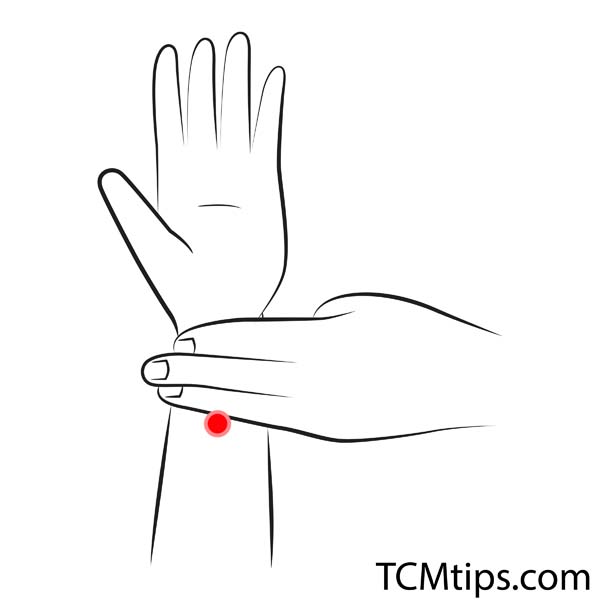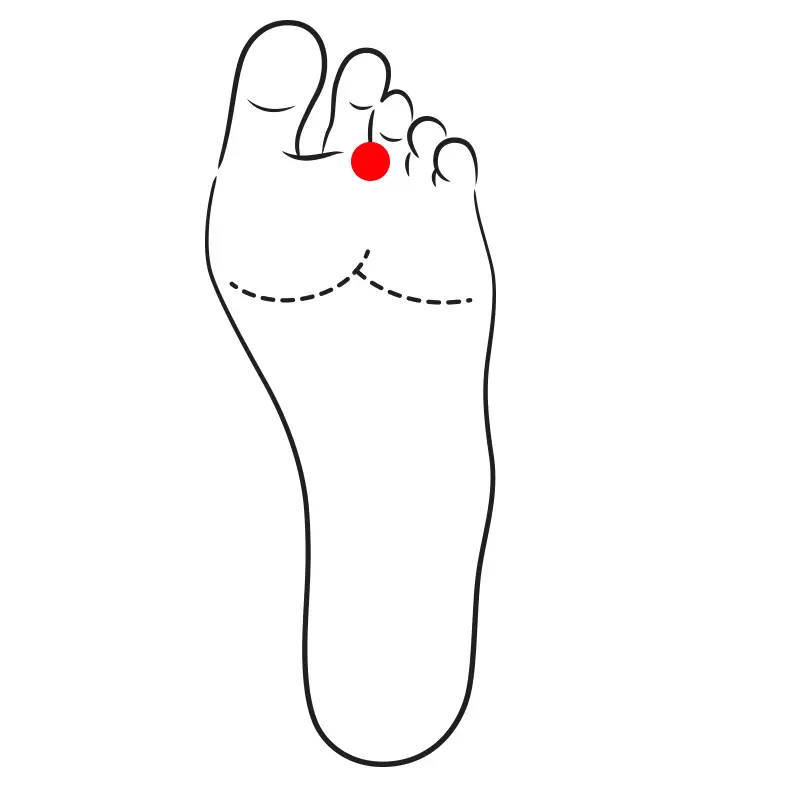Effective Acupressure Points for Easing Pregnancy Nausea
Pregnancy can be a joyous yet challenging time, particularly when dealing with nausea, commonly known as morning sickness. Acupressure, a technique rooted in Traditional Chinese Medicine (TCM), offers a natural and non-invasive way to alleviate these symptoms. We consulted with Ms. Mai Sogawa, a TCM Therapist from Japan, to explore effective acupressure points for managing pregnancy-related nausea. For more about Ms. Sogawa’s expertise, click here.
PC-6 (Neiguan) – The Inner Gate

PC-6, or Neiguan, is located on the inner forearm, about three finger widths above the wrist crease, between the two tendons. This point is known for its ability to calm the mind, relieve anxiety, and settle the stomach, making it particularly effective for morning sickness. PC-6 is generally considered safe for use throughout pregnancy.
ST-36 (Zusanli) – The Leg Three Miles

ST-36, also known as Zusanli, is found about four finger widths below the kneecap, slightly toward the outer side of the shin. This point helps boost energy, enhance immune function, and support digestive health. However, ST-36 should be used with caution during early pregnancy, as stimulating this point can sometimes lead to uterine contractions. Pregnant women should consult a healthcare provider before using this point.
Ren-17 (Shanzhong) – The Chest Center

Ren-17, or Shanzhong, is situated in the center of the chest, at the level of the fourth intercostal space. It helps regulate qi (energy flow) and alleviate feelings of fullness or discomfort in the chest, which can be beneficial for managing nausea. Ren-17 is generally safe for use during pregnancy and also aids emotional well-being.
EX-LE14(Inner Neiting) – Inner Courtyard

Inner Neiting is located on the sole of the foot, between the second and third toes, in the depression just behind the ball of the foot. This point is effective for addressing digestive issues and alleviating nausea. As with ST-36, pregnant women should use Inner Neiting with caution, particularly in early pregnancy, and seek professional guidance.
TCM Perspective on Severe Pregnancy Nausea
In TCM, severe pregnancy nausea is often seen as a sign of disharmony within the body. Key factors include:
- Stomach Qi Rebellion: When stomach qi moves upwards instead of downwards, causing nausea and vomiting.
- Spleen and Stomach Deficiency: Weakness in these organs disrupts digestion, leading to nausea.
- Liver Qi Stagnation: Emotional stress can cause liver qi to stagnate, affecting the stomach.
- Dampness and Phlegm Accumulation: Excess dampness or phlegm can block the stomach’s normal functions.
These imbalances are treated with acupuncture, herbal remedies, and lifestyle changes to restore balance and alleviate symptoms.
Additional TCM Tips to Ease Nausea
- Dietary Adjustments: Eat small, frequent meals and choose warm, easy-to-digest foods. Avoid cold and greasy foods.
- Herbal Teas: Ginger tea and peppermint tea can help reduce nausea.
- Gentle Exercise and Rest: Activities like walking or prenatal yoga improve circulation and digestion, while adequate rest is crucial.
- Stress Reduction: Techniques such as meditation, deep breathing, or tai chi can help manage stress and reduce nausea.
Considerations for Pregnant Women
- Professional Guidance: Always consult a healthcare provider or TCM practitioner before starting acupressure, especially during pregnancy.
- Gentle Application: Use gentle pressure, particularly in sensitive areas or early pregnancy, to avoid overstimulation.
- Monitor Reactions: Pay attention to how your body responds and discontinue use if any discomfort occurs.
- Safety First: Certain acupressure points can influence uterine activity, making it crucial to seek professional advice, especially in the first trimester.
By incorporating these acupressure techniques and TCM tips, pregnant women can find a natural way to alleviate nausea and support overall well-being. Always prioritize safety and consult with professionals to ensure the best outcomes for both mother and baby.

Try our Anti-Aging Gua Sha Tool designed to bring out your skin’s natural glow.
Best Gua Sha Product- Anti-Aging: The tool is designed to target 11 specific aging signs such as wrinkles and sagging skin. By following the 7-step routine, users can improve skin firmness and reduce fine lines naturally.
- Enhances Skincare Routine: It works effectively with serums and lotions, boosting absorption and efficacy of skincare products.
- Visible Skin Improvement: Users can expect a smoother complexion, reduced puffiness, and a more youthful appearance.
 P. Sze
P. Sze 


















